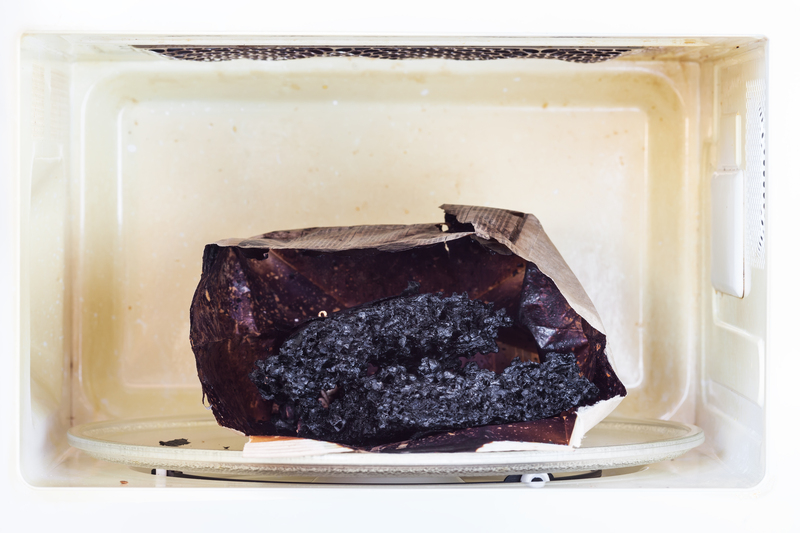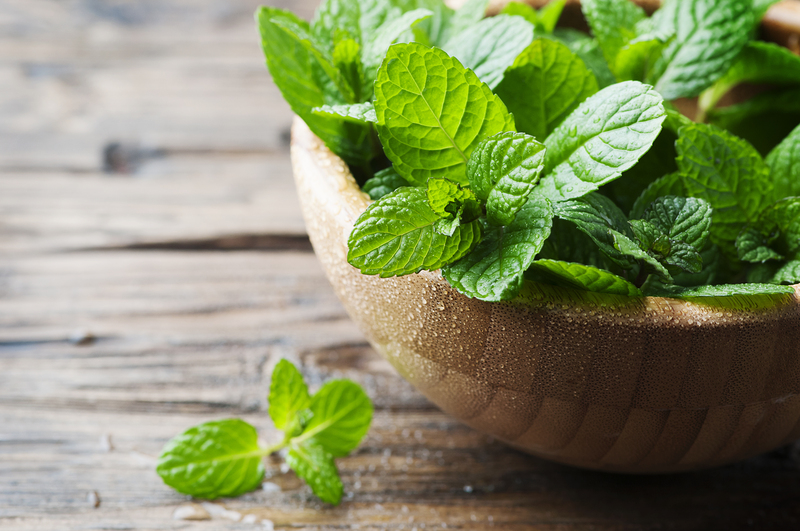Ultimate Guide to Preserving Velvet Curtain Beauty Through Washing
Posted on 26/08/2025
Ultimate Guide to Preserving Velvet Curtain Beauty Through Washing
Velvet curtains add a touch of luxury and sophistication to any space. Their rich texture and brilliant shades can transform a room, making them a favorite choice for elegant interiors. However, maintaining their beauty requires special care, especially when it comes to cleaning. Velvet's plush fibers are delicate and can easily be damaged if not treated properly. If you want your velvet curtains to remain lustrous and beautiful for years, correct washing and maintenance techniques are essential.
In this comprehensive guide, we will walk you through everything you need to know about preserving velvet curtain beauty through washing. From understanding the unique characteristics of velvet, to step-by-step cleaning instructions, spot-treating stains, drying, professional care, and preventative maintenance, you'll learn expert tips to keep your curtains looking as stunning as the day you hung them.

Understanding Velvet: What Makes It Unique?
Before diving into the washing process, it's crucial to understand what velvet is and why it needs special care. Velvet is a woven fabric, usually made from silk, cotton, or synthetic fibers, that features a distinct pile - the raised, soft fibers that give velvet its luxurious texture. The pile can be easily crushed or marred, so improper washing can lead to permanent damage.
- Types of Velvet: There's crushed velvet, velveteen, silk velvet, and polyester velvet. Each type responds differently to water and cleaning agents.
- Sensitivity: Natural velvet (e.g., silk, cotton) is more delicate and sensitive to water than synthetic velvets.
- Why Velvet Curtains Need Special Attention: The pile can become flattened, colors may bleed, and the fabric can lose its sheen if improperly washed.
Keeping these unique qualities in mind, let's proceed to how you can preserve the beauty of velvet curtains through careful washing.
Pre-Wash Preparation: Setting the Stage for Safe Cleaning
1. Read the Care Label
Always start by checking the manufacturer's care instructions. Some velvet curtains are strictly dry-clean only, while others may be labeled as washable. Ignoring this information risks permanent harm to the fabric.
2. Remove Dust and Loose Debris
Use a soft-bristled vacuum brush attachment or a dry microfiber cloth to gently remove surface dust and debris. This simple step helps keep your velvet curtain beautiful and readies them for a deeper clean.
- Vacuum on low suction to avoid pulling the fabric.
- Brush in the direction of the pile to maintain its texture.
3. Spot Test - Don't Skip This!
Do a spot test on a small, hidden section of your curtain with any cleaning solution you plan to use. This helps ensure the color doesn't bleed and that the fabric isn't adversely affected.
Washing Velvet Curtains: All Methods Explored
Choosing the right cleaning method depends on your curtain's composition and label recommendations. Here's how to preserve velvet curtains during washing, whether by hand, machine, or professional service.
1. Hand Washing Velvet Curtains
- Fill a large basin or bathtub with cold or lukewarm water.
- Add a small amount of mild, non-alkaline detergent (such as wool wash or baby shampoo).
- Submerge the curtain, gently agitate the water but do not wring, twist, or rub the fabric.
- Let the curtain soak for about 5-10 minutes.
- Drain and refill with clean, cool water to rinse until all soap is gone.
Tip: Always support the weight of wet velvet curtains to avoid stretching and damaging the fabric.
2. Machine Washing Velvet Curtains (If Allowed)
- Place the curtain inside a large mesh laundry bag to prevent abrasion.
- Use the machine's gentle or delicate cycle with cold water.
- Use only a small amount of mild detergent.
- Never use bleach, fabric softener, or harsh chemicals as they can break down velvet fibers.
- After the cycle, prompt removal prevents creasing.
Caution: Never machine-wash silk or cotton velvet unless recommended by the manufacturer.
3. Dry Cleaning Velvet Curtains
For curtains labeled as dry clean only or made from delicate fibers like silk, professional dry cleaning is the safest route. Experienced cleaners use techniques and solvents formulated to preserve velvet's original appearance and luster.
- Inform your cleaner about any stains or issues so they can pre-treat accordingly.
- Choose a reputable cleaner experienced with luxury fabrics.
Spot Treating Stains: Preserving Velvet Curtain Beauty Through Targeted Cleaning
Spills or stains are best tackled immediately to avoid permanent damage. The goal is to remove stains without disturbing the velvet pile or causing water marks.
- Blot (do not rub) the stain gently with a clean, dry cloth to soak up excess liquid.
- Mix a solution of cool water and a small amount of mild detergent.
- Dab the solution onto the stain with a clean sponge or cloth; avoid oversaturating the velvet.
- Blot the area with a dry cloth to remove moisture, then let air dry.
For stubborn stains like ink, oils, or wine, consult a professional cleaner immediately.
Proper Drying Techniques for Velvet Curtains
Incorrect drying can damage velvet's structure. To preserve the elegance of velvet curtains after washing, use the following techniques:
- Never use a tumble dryer. The heat and agitation ruins the pile and texture.
- Air dry curtains flat or hanging in a well-ventilated area away from direct sunlight or heat sources.
- Gently press with a clean, dry towel to blot out excess moisture.
- Support the weight of the curtain while drying to prevent stretching.
Removing Wrinkles Without Crushing Velvet
- Use a steamer (never a traditional iron) held a few inches away from the curtain to gently release wrinkles.
- Avoid direct contact with the fabric to maintain the plushness of the pile.
Top Tips for Maintaining Velvet Curtain Beauty Between Washes
Preserving the beauty of velvet curtains is not just about washing, but also about regular maintenance and gentle handling. Incorporate these habits into your cleaning routine:
- Vacuum or brush gently every couple of weeks to prevent dust buildup.
- Rotate the curtains occasionally to even out sun exposure and wear.
- Use sheer liners to protect velvet from harsh sunlight, which can cause fading.
- Avoid handling with dirty or oily hands, as skin oils can stain or mat the pile.
- Address stains quickly for the best chance of removal without damage.
Common Mistakes to Avoid When Caring for Velvet Curtains
Even with the best intentions, there are some frequent errors that can compromise the lasting beauty of velvet curtains. Here's what not to do:
- Do not rub or scrub stains - this crushes the pile and leaves marks.
- Avoid hanging wet curtains directly from rods - the weight and water can stretch the fabric.
- Never soak for long periods - extended exposure to water may weaken fibers and fade color.
- Don't use hot water or high heat - this can cause shrinkage and damage fibers.
- Skip harsh chemicals - they can degrade the velvet's natural sheen.
When Should You Wash Velvet Curtains?
How often you should wash your velvet curtains depends on location, environment, and amount of dust. Generally, a deep wash once or twice a year is sufficient, with regular gently vacuuming or brushing in between. If curtains are exposed to smoke, kitchen grease, or significant dust, more frequent care is advised.
Frequently Asked Questions About Preserving Velvet Curtains
Can I iron my velvet curtains?
Never iron velvet directly. Always use a handheld steamer held at a distance to remove wrinkles without crushing the fabric's pile.
What's the best detergent for velvet?
Use a mild, non-alkaline, and non-enzyme detergent. Baby shampoo, wool wash, or a delicate-specific laundry solution is ideal.
How do I restore crushed velvet pile?
Gently steam the area and brush with a soft clothing brush in the direction of the pile whilst the fiber is still slightly damp.
Do velvet curtains attract dust?
Velvet's texture can trap dust and allergens more than other fabrics, making regular maintenance important for appearance and allergies.

Professional vs. DIY Velvet Curtain Cleaning
While DIY washing of velvet curtains is possible for some types, there's definitely value in professional cleaning, especially for expensive, antique, or pure silk velvet curtains. Professionals have specialized products and equipment to clean thoroughly while preserving the integrity of the delicate fibers.
- Choose professional care for heavily soiled or valuable velvet curtains.
- DIY is best for synthetic or sturdy cotton velvets labeled as safe to wash.
Conclusion: Cherishing the Beauty of Your Velvet Curtains For Years
Preserving velvet curtain beauty through washing is all about gentle handling, the right cleaning techniques, and regular upkeep. These guidelines ensure that your investment in luxury velvet curtains continues to add elegance and warmth to your home for years to come.
- Always check care labels before cleaning.
- Opt for hand or professional washing for best results.
- Gently dry and maintain velvet's plush look with steaming and brushing.
- Adopt preventative habits to reduce the need for frequent washing.
With proper care, your velvet curtains will remain as beautiful and luxurious as ever. If in doubt, always consult a fabric care professional to ensure you are safeguarding both the fabric and the artistry behind your stunning window treatments.





